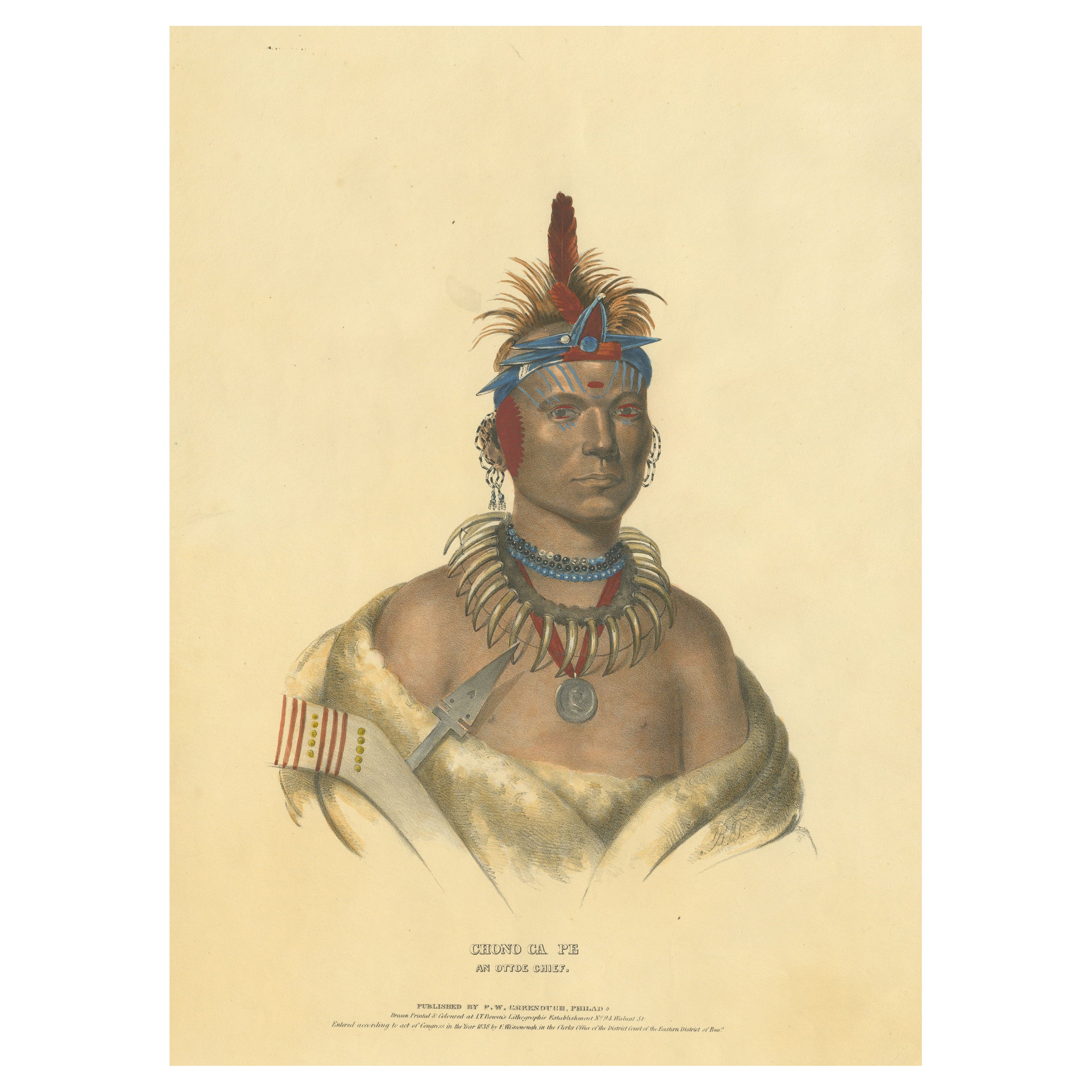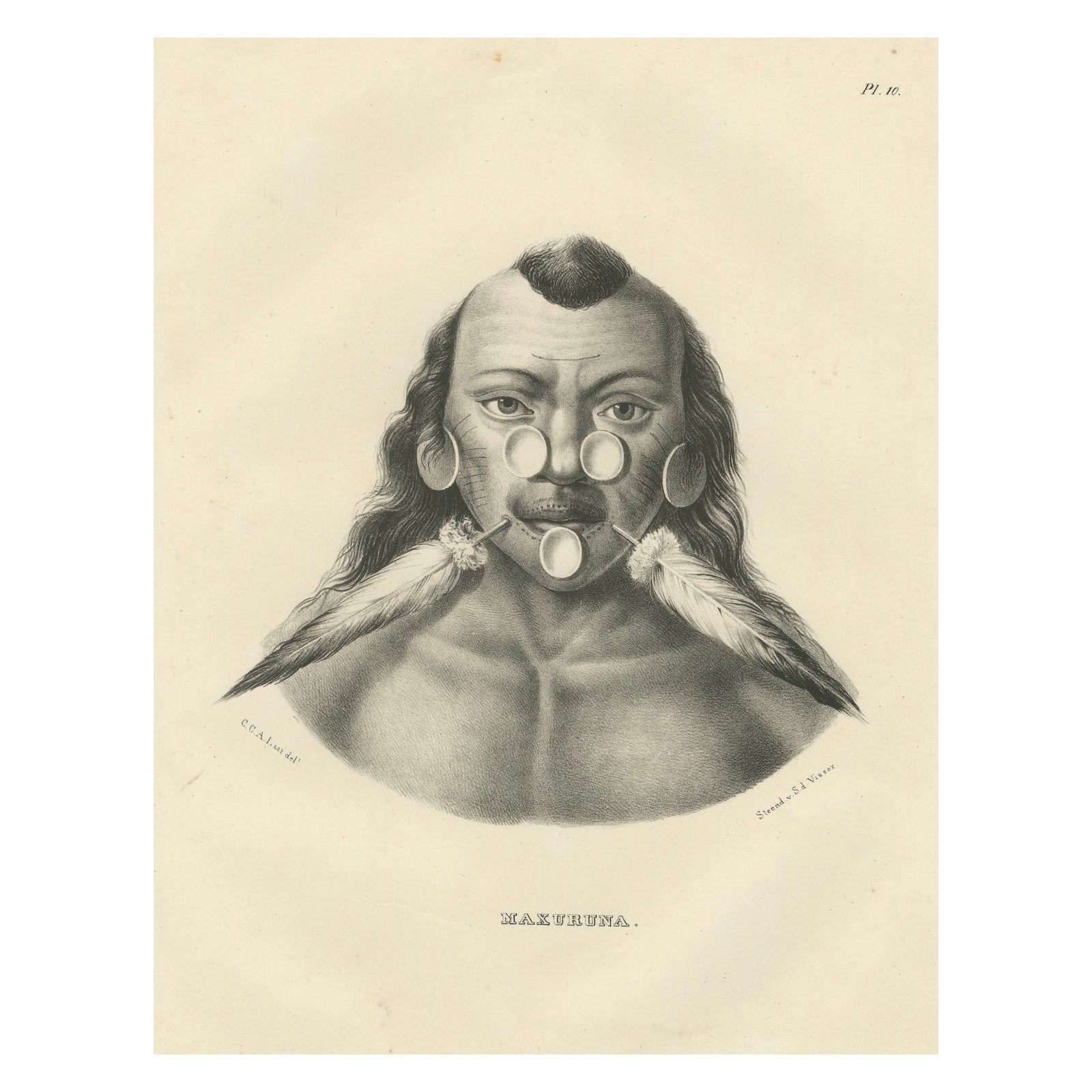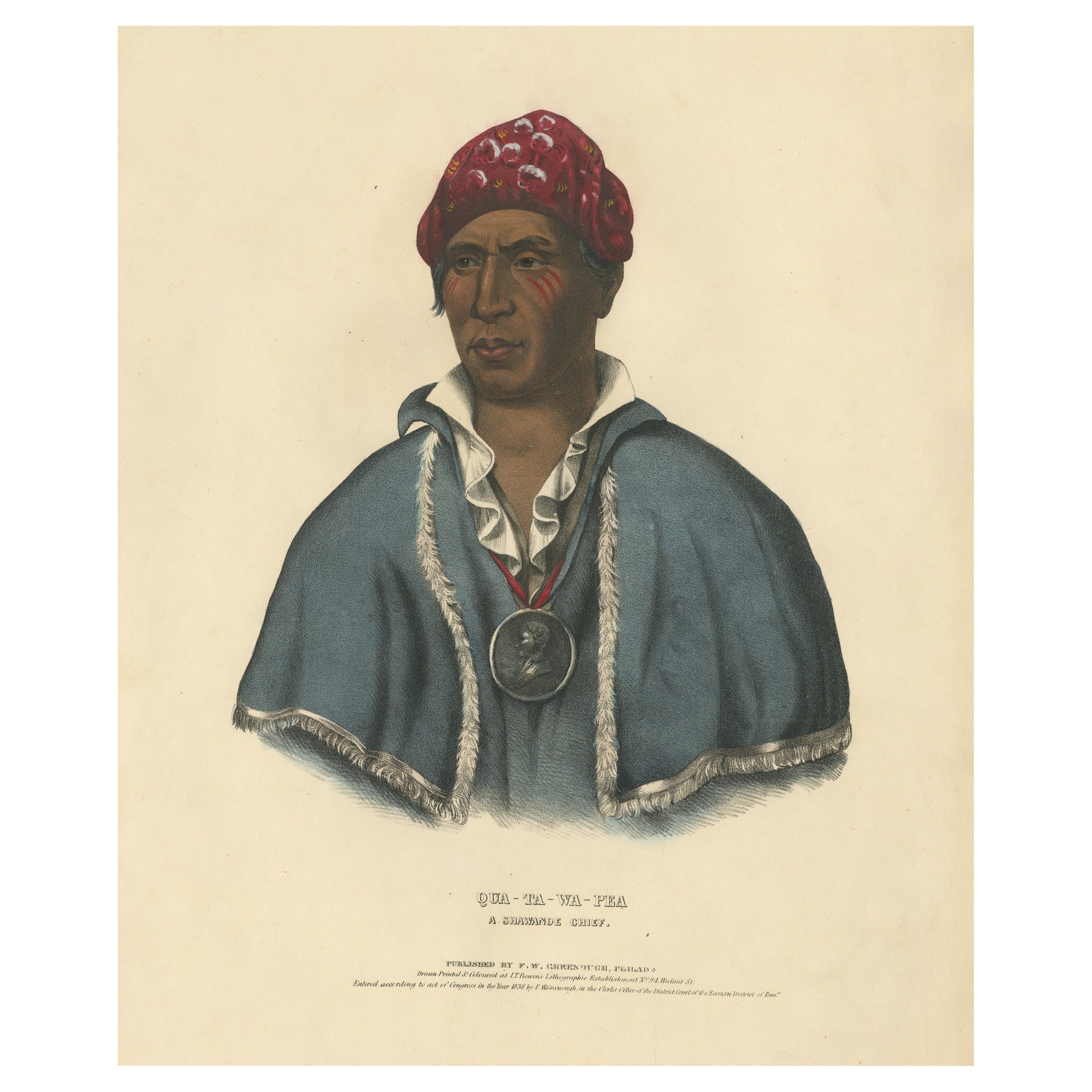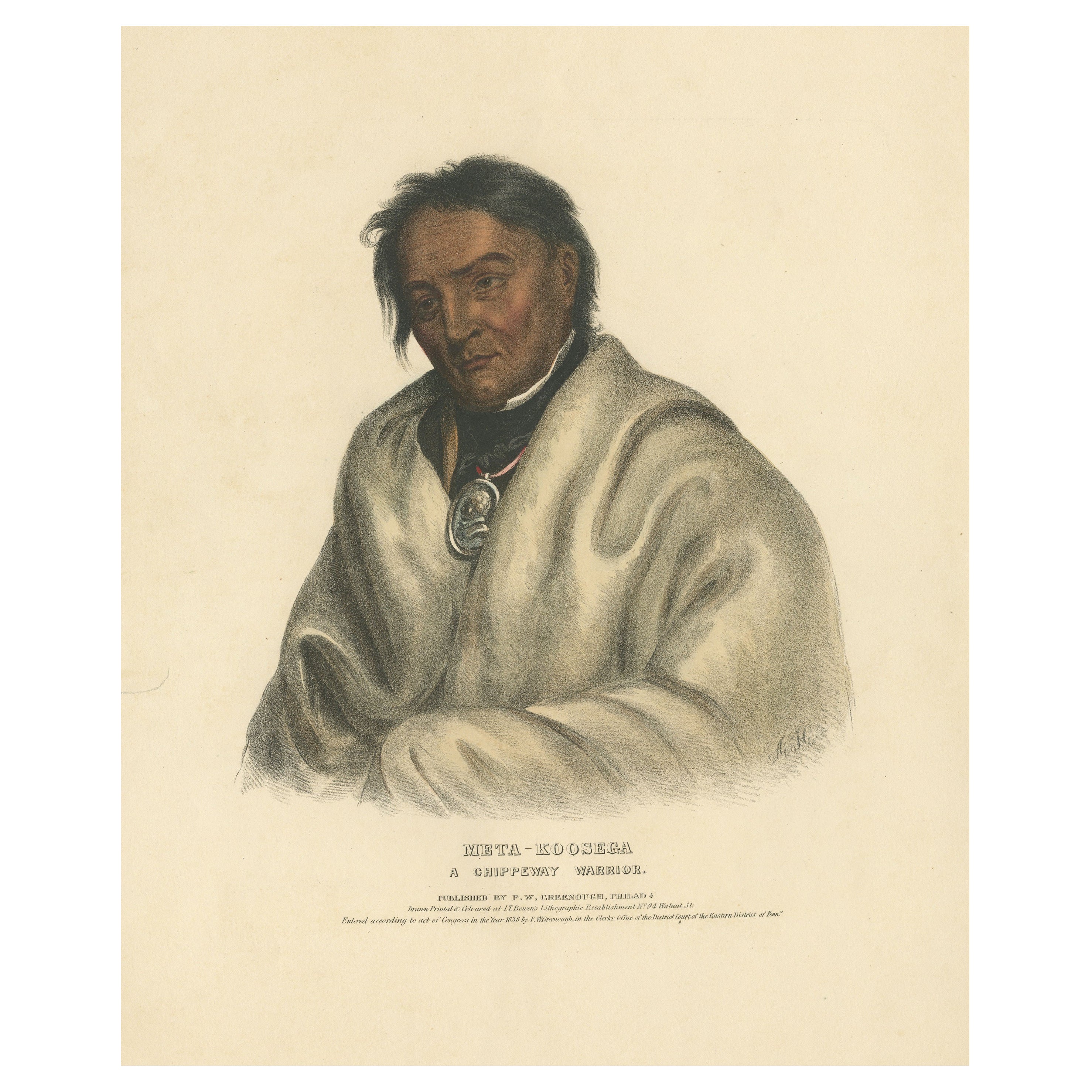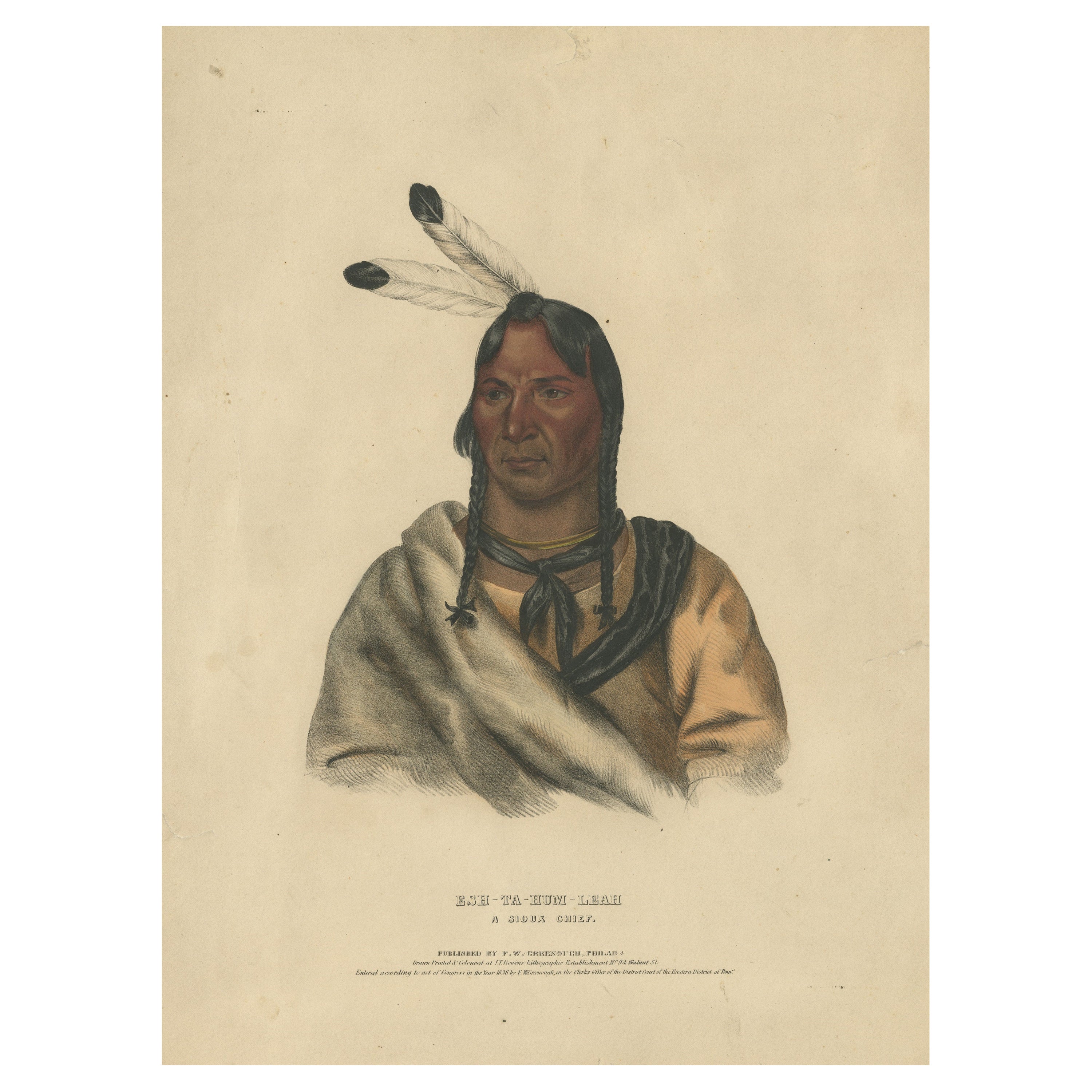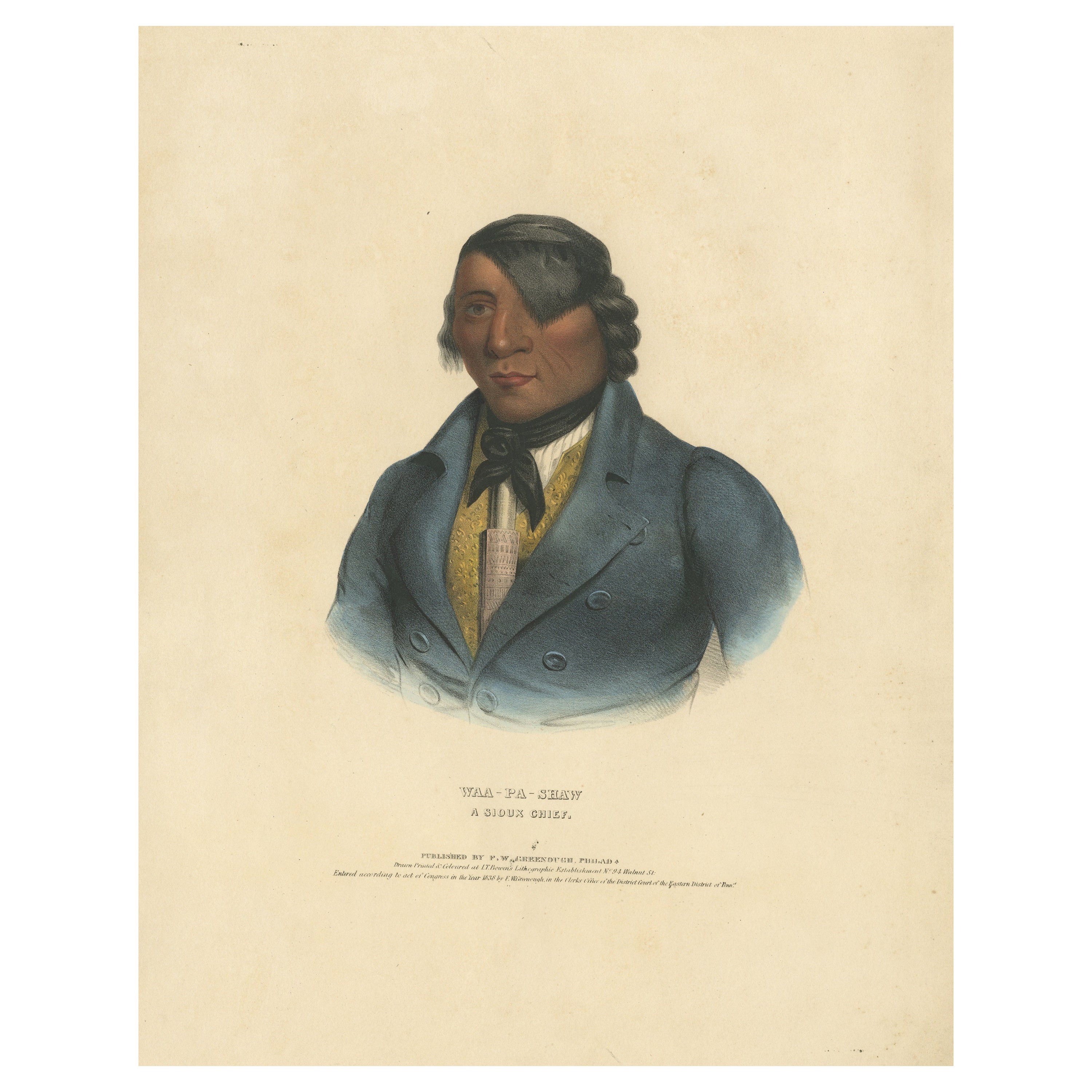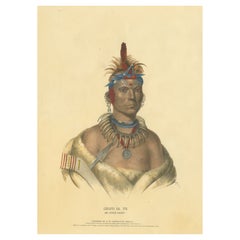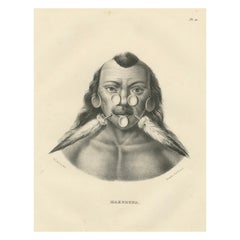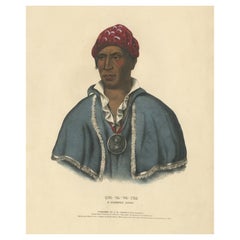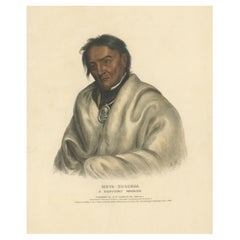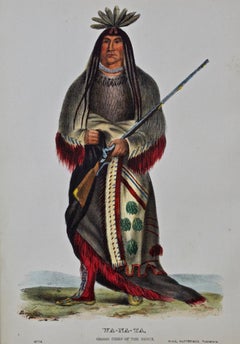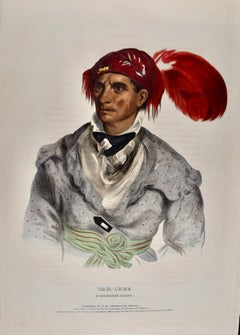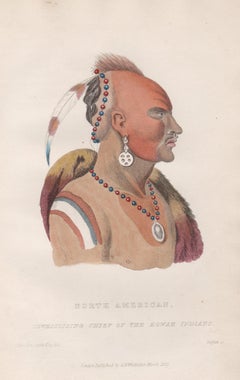Items Similar to Portrait of Native American Tawadanega by Karl Joseph Brodtmann, 1836
Want more images or videos?
Request additional images or videos from the seller
1 of 6
Portrait of Native American Tawadanega by Karl Joseph Brodtmann, 1836
$421.60
$527.0120% Off
£312.43
£390.5420% Off
€352
€44020% Off
CA$575.57
CA$719.4620% Off
A$640.30
A$800.3720% Off
CHF 335.65
CHF 419.5720% Off
MX$7,824.29
MX$9,780.3620% Off
NOK 4,274.11
NOK 5,342.6420% Off
SEK 4,023.49
SEK 5,029.3620% Off
DKK 2,680.10
DKK 3,350.1220% Off
Shipping
Retrieving quote...The 1stDibs Promise:
Authenticity Guarantee,
Money-Back Guarantee,
24-Hour Cancellation
About the Item
This lithograph, created by Karl Joseph Brodtmann, depicts Tawadanega, an individual whose name suggests Native American heritage, likely from one of the Eastern Woodlands tribes. The portrait emphasizes distinctive features of indigenous culture, focusing on attire, jewelry, and hairstyle. This work is an example of Brodtmann's ethnographic documentation.
Description:
The lithograph portrays a Native American man identified as Tawadanega, adorned in traditional attire. His appearance highlights cultural markers that were of interest to European audiences in the 19th century.
- The subject’s headgear features a large, prominent feathered headdress, which was often symbolic of rank, achievement, or tribal identity among Native American groups. The headband is secured by a decorative ornament in the center, contributing to the overall regality of his appearance.
- **
The clothing includes a garment with metal discs or medallions draped across the chest, which might have been decorative elements made from silver or other materials, signifying status or cultural affiliation.
- Jewelry is another defining feature, with large earrings and possibly other adornments visible around his neck. His chest is decorated with a gorget, a type of ornamental neckwear commonly found in various Native American cultures during the 18th and 19th centuries, often made from metals such as silver or brass.
The artist’s attention to detail in the headdress, jewelry, and facial features aligns with Brodtmann’s goal of representing the diversity of indigenous cultures through ethnographic realism.
Maker: Karl Joseph Brodtmann (1787–1862) was a Swiss lithographer whose works focused on ethnographic studies and natural history. His illustrations often accompanied scientific and anthropological texts, serving as visual records for European audiences interested in learning about distant lands and cultures. This portrait of Tawadanega would have been part of a broader collection aimed at documenting the indigenous peoples of North America.
Technique and Style: This portrait was created using lithography, a printmaking technique that allowed Brodtmann to achieve fine detail and subtle shading. His style is marked by ethnographic realism, meaning that he aimed to represent the subject with as much accuracy and detail as possible while still adhering to the European expectations of what constituted an "exotic" portrait. The feathers, jewelry, and facial expression are rendered with great care, suggesting that the artist had access to detailed descriptions or visual references of the subject.
Brodtmann’s approach is characterized by a balance between artistic interpretation and scientific observation, creating a piece that is both aesthetically appealing and valuable for ethnographic study. This particular portrait of Tawadanega reflects the European fascination with the indigenous peoples of North America during a time of exploration and expansion, as well as a desire to understand their cultures through visual documentation.
Cultural Context: The name Tawadanega might refer to a member of a specific tribe or a person of significant standing, possibly an important figure within the context of Native American society in the Eastern Woodlands or Great Lakes regions. Many Native American leaders or figures were depicted in 19th-century European ethnographic works as part of the growing interest in the diverse cultures of the Americas.
- Dimensions:Height: 0.4 in (1 cm)Width: 0.4 in (1 cm)Depth: 0 in (0.02 mm)
- Materials and Techniques:
- Period:
- Date of Manufacture:1836
- Condition:Condition: good, given age. General age-related toning and/or occasional minor defects from handling. Some stains along the right border, not affecting the image. Please study scan carefully.
- Seller Location:Langweer, NL
- Reference Number:Seller: BG-13176-81stDibs: LU3054341513662
About the Seller
5.0
Recognized Seller
These prestigious sellers are industry leaders and represent the highest echelon for item quality and design.
Platinum Seller
Premium sellers with a 4.7+ rating and 24-hour response times
Established in 2009
1stDibs seller since 2017
2,494 sales on 1stDibs
Typical response time: 1 hour
- ShippingRetrieving quote...Shipping from: Langweer, Netherlands
- Return Policy
Authenticity Guarantee
In the unlikely event there’s an issue with an item’s authenticity, contact us within 1 year for a full refund. DetailsMoney-Back Guarantee
If your item is not as described, is damaged in transit, or does not arrive, contact us within 7 days for a full refund. Details24-Hour Cancellation
You have a 24-hour grace period in which to reconsider your purchase, with no questions asked.Vetted Professional Sellers
Our world-class sellers must adhere to strict standards for service and quality, maintaining the integrity of our listings.Price-Match Guarantee
If you find that a seller listed the same item for a lower price elsewhere, we’ll match it.Trusted Global Delivery
Our best-in-class carrier network provides specialized shipping options worldwide, including custom delivery.More From This Seller
View AllLarge Antique Print of Chono Ca Pe, an Otoe Chief, circa 1838
Located in Langweer, NL
Steward of the Plains: Chono Ca Pe, An Otoe Chief
This is a hand-colored lithograph of Chono Ca Pe, an Otoe (often spelled Ottoe) Chief, taken from the "History of the Indian Tribes...
Category
Antique Mid-19th Century Prints
Materials
Paper
$1,221 Sale Price
40% Off
Portrait of a Member of the Maxuruna Amazon Tribe by Karl Joseph Brodtmann, 1836
Located in Langweer, NL
This lithograph, created by Karl Joseph Brodtmann, depicts an individual named Maxuruna, who appears to belong to an indigenous group, from South America, based on the adornments and...
Category
Antique 1830s Prints
Materials
Paper
$354 Sale Price
32% Off
Large Hand-Colored Antique Print of Qua-Ta-Wa-Pea, a Shawnee Chief, circa 1838
Located in Langweer, NL
The Shawnee Sentinel: Qua-Ta-Wa-Pea, A Chief of Poise and Peace
A hand-colored lithograph of Qua-Ta-Wa-Pea, also known as Leatherlips, a respected leader of the Shawnee tribe. This ...
Category
Antique Mid-19th Century Prints
Materials
Paper
$1,820 Sale Price
20% Off
Large Antique Print of Meta-Koosega, an Ojibwe Warrior, circa 1838
Located in Langweer, NL
The Stoic Warrior: Meta-Koosega of the Ojibwe
This lithograph is titled "Meta-Koosega, a Chippeway Warrior." It is a hand-colored print from the collection "History of the Indian Tr...
Category
Antique Mid-19th Century Prints
Materials
Paper
$1,820 Sale Price
20% Off
Large Antique Print of Esh-Ta-Hum-Leah, a Sioux Chief, circa 1838
Located in Langweer, NL
Esh-Ta-Hum-Leah: The Thoughtful Leader of the Sioux
This is a hand-colored lithograph titled "Esh-Ta-Hum-Leah, a Sioux Chief," which is part of the "History of the Indian Tribes of ...
Category
Antique Mid-19th Century Prints
Materials
Paper
$1,820 Sale Price
20% Off
Large Antique Print of Waa-Pa-Shaw, a Sioux Chief, circa 1838
Located in Langweer, NL
Waa-Pa-Shaw: The Stately Sioux Chief
This lithograph is titled "Waa-Pa-Shaw, a Sioux Chief," from the "History of the Indian Tribes of North America," with hand-colored portraits ba...
Category
Antique Mid-19th Century Prints
Materials
Paper
You May Also Like
Wa-Kawn, A Winnebago Chief: Folio-sized Hand-colored McKenney & Hall Lithograph
By McKenney & Hall
Located in Alamo, CA
This is an original 19th century hand-colored folio-size McKenney and Hall lithograph of a Native American entitled "Wa-Kawn, A Winnebago Chief", after a painting by Charles Bird Kin...
Category
Mid-19th Century Naturalistic Portrait Prints
Materials
Engraving
Wa-Na-Ta, Chief of the Sioux: Original Hand-colored McKenney & Hall Lithograph
By McKenney & Hall
Located in Alamo, CA
This is an original 19th century hand-colored McKenney and Hall lithographic portrait of a Native American entitled "Wa-Na-Ta, Grand Chief of the Sio...
Category
Mid-19th Century Naturalistic Portrait Prints
Materials
Lithograph
Tah-Chee, Cherokee Chief: 19th C. Folio Hand-colored McKenney & Hall Lithograph
By McKenney & Hall
Located in Alamo, CA
This is an original 19th century hand-colored folio-sized lithographic portrait of a Native American entitled "Tah-Chee, A Cherokee Chief", from McKenney and Hall's 'History of the Indian Tribes of North America'. It was lithographed by J. T. Bowen after a painting by Charles Bird King and published by E. C. Biddle in Philadelphia in 1838.
Tahchee's name translates to Dutch in Cherokee, and he became known as William Dutch. He was born in 1790 in the Cherokee Nation, which is now in a portion of Alabama. Tahchee became known as a skilled warrior and leader among his people, and he was eventually appointed as a chief of the Cherokee Nation "Old Settlers". During his time as chief, Tahchee was a rival of the Osage people and he worked to protect the Cherokee people and their land from encroachment by white settlers. He was a strong advocate for maintaining Cherokee sovereignty and cultural traditions, even as pressure mounted from the United States government to remove the Cherokee from their ancestral lands. In 1838, Tahchee and many other Cherokee people were forcibly removed from their homes in what is known as the Trail of Tears...
Category
Mid-19th Century Naturalistic Portrait Prints
Materials
Lithograph
Sewessissing Chief of the Eowah Indians, Native American portrait engraving
Located in Melbourne, Victoria
Copper-line engraving with original hand-colouring by M Griffith after Charles Hamilton Smith, 1827.
Depicts the Sewessissing, chief of the Iowa Indians.
Charles Hamilton Smith (1...
Category
Early 19th Century American Impressionist Portrait Prints
Materials
Engraving
Shar-I-Tar-Ish, A Pawnee Chief: Original Hand-colored McKenney & Hall Lithograph
By McKenney & Hall
Located in Alamo, CA
This is an original 19th century 1st edition octavo hand-colored McKenney and Hall lithograph of a Native American entitled " Shar-I-Tar-Ish, A Pawnee Chief", lithographed by J. T. Bowen after a painting by Charles Bird King and published by Rice and Hart in Philadelphia in 1848. Shar-I-Tar-Ish's portrait has a reddish hue from the feathers in his headdress and amulet chain, with a brownish taupe color of the upper trim of his costume. He is wearing his presidential peace medal. He has a very serious and thoughtful expression.
This original McKenney and Hall hand-colored lithograph is printed on a sheet measuring 10.38" high and 7" wide. There are faint smudges in the margins. The print is otherwise in very good condition. The original descriptive text pages, 33-34, from McKenney and Hall's 19th century publication are included.
A famous Pawnee chief, Shar-I-Tar-Ish led his people during the early part of the 19th century. He was descended from a line of chiefs. Shar-i-tar-ish was a young man when he went to Washington in 1822 at the invitation of President James Monroe...
Category
Mid-19th Century Naturalistic Portrait Prints
Materials
Lithograph
Wa-Kawn, A Winnebago Chief: An Original Hand-colored McKenney & Hall Lithograph
By McKenney & Hall
Located in Alamo, CA
This is an original 19th century hand-colored McKenney and Hall lithograph of a Native American entitled "Wa-Kawn, A Winnebago Chief, No. 83 (The Snake)", published by Rice, Rutter &...
Category
Mid-19th Century Naturalistic Portrait Prints
Materials
Lithograph
More Ways To Browse
Feather Jewellery
Antique Feather Jewelry
Medallion Earrings
Antique Gorget
Dovetail Vinyl Record
Dragon Boat
Egyptian Cat
Embossed Copper Box
English Bow Front Chest
English Headboard
English Iron Bed
Folding Travel Clock
Fornasetti Paper
Four Poster Bed Kings
Francois Pompon
Franz Xavier Bergman
Frem Rojle Chair
French Confit Jar
